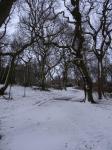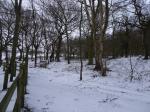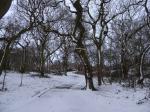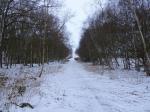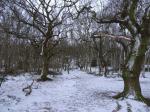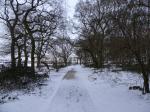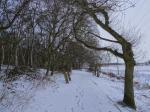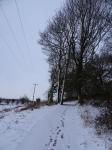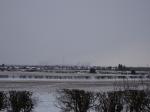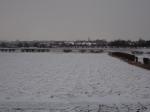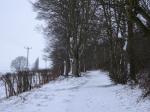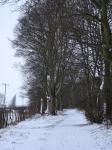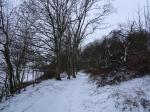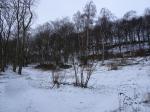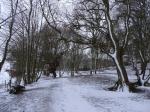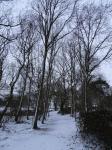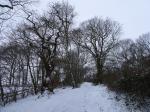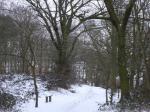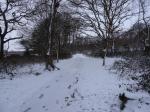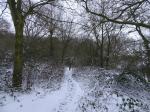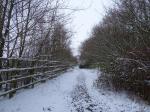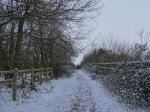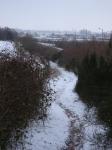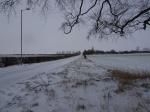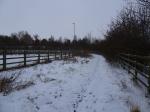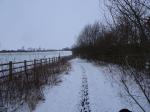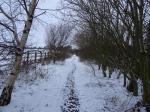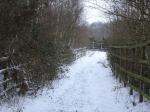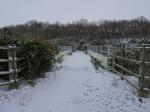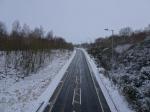Brayton Barff Through the Seasons.
Set in the Vale of York, South West of the market town of Selby and between the villages of Thorpe Willoughby and Brayton, lies Brayton Barff, a sandstone Hill approximately one hundred and fifty feet in height which was formed by glacial movement during the last Ice Age. It is a significant landmark in an otherwise flat landscape.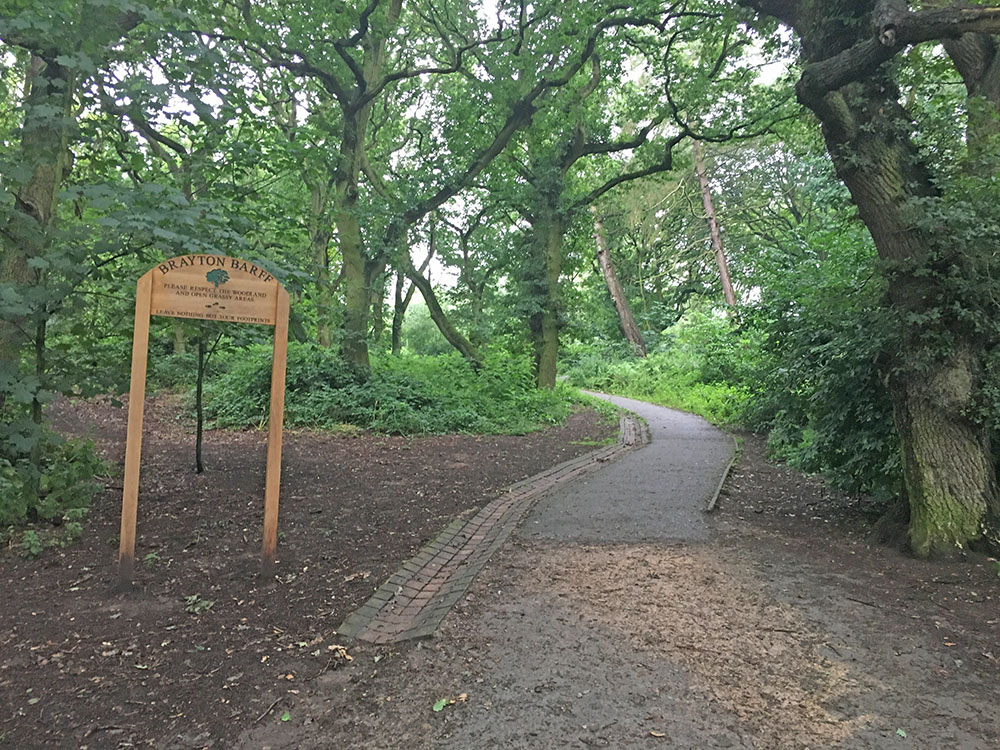
Today the site is primarily owned by Yorkshire Water with Selby District Council owning a small patch of the land adjacent to the A63 Selby bypass. A large underground reservoir occupies the centre of the site which delivers water to around 4.7 million customers throughout Yorkshire.
Within the Barff woodland over 40% of the trees are Sessile Oak which are generally found in semi natural woodlands in the north of the country. These trees are so called because its acorns are not held on stalks, like those of the English Oak (Pedunculate), but attached directly to the outer twigs. There are also several English Oak trees as well as some cross-hybrid oaks. These trees are known to support many species of flora and fauna, invertebrates, mosses, lichen and fungi.
During the Victorian times it is thought that the shipbuilders on the east coast would come over to the Barff for selected cuts of timber to build their sea going vessels.
The Barff also has a variety of other trees including Silver Birch, Beech, Sycamore, Holly, Rowan, Scots Pine, Alder, Hawthorne and European Larch. There are also several Yew, Willow, Hazel, Horse Chestnut and Wych Elm. As with similar woodlands there are a variety of bushes, including Honeysuckle, Elderberry, Gorse, Broom and Buddleia.
The history of Brayton Barff is quite vague, apparently during 1803 a beacon was lit on the Barff when the country was threatened with an invasion by Napoleon. In May 1935, to celebrate King George V's Silver Jubilee, a Bonfire was lit on the Barff as part of the celebrations.
Early issues of Ordnance Survey Maps dated 1903 clearly show a rifle range on the Barff, extending out to Mill Lane. During the 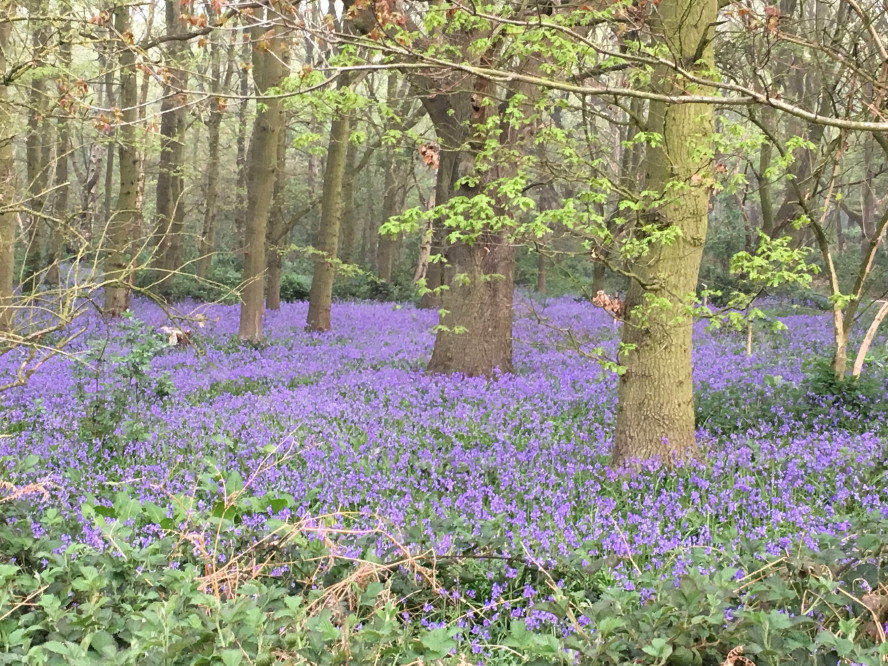
Between 2001 – 2004 the A63 Selby bypass, 10km twin lane single carriageway was constructed which severed the South West corner of the Barff, adjacent to Selby Golf Course and resulted in a slight redesign of several holes on the golf course. Wooden fencing was erected as a result of this new road running alongside of the Barff and a footbridge constructed over the ‘new road’ following the line of the Bridal way which extends from Mill Lane. Around 2005/2006 a definite 2metre wide limestone aggregate footpath was laid forming a circular path around the outer edges of the woodland. This footpath is approximately 1.2 miles in length and takes about 30 minutes to circumnavigate at a leisurely pace.
In 2012 the Barff was declared an Ancient Oak Woodland and as such throughout 2012 and 2013 significant work had been carried out by the relevant agencies to cut and remove large swathes of non-native trees, creating at that time huge scars on the landscape. Some three years later the planting of the native trees have become well established and are flourishing. Ongoing maintenance work on the footpath around the bottom of the Barff was completed during the Summer of 2016.
A second phase of woodland maintenance commenced during the Autumn of 2019 with the removal of many old and diseased trees and the cutting back of the Gorse and Broom bushes, especially adjacent to the ‘bypass trail’, this work continued through till March 2020 with re planting continuing into April 2020.
Brayton Barff is a popular site for walkers and bird watchers alike and a path circling the outer perimeter of the Barff makes a pleasant thirty minute walk, giving views looking over towards Selby and the village of Brayton as well as the power stations of Drax and Eggborough..jpg)
For the early risers it is a great place to see some stunning sunrises over the villages of Brayton looking towards Drax Power Station, the same with the Sunsets looking over towards Eggborough and Monk Fryston.
The Barff changes with the Seasons and every visit can reveal something new, the woodland is a haven for wildlife. Records show that since 1982 one hundred and twelve species of bird have been seen in the woodland and at least 40 of those have bred here, including Tawny Owl, Buzzard, Green Woodpecker, Spotted Flycatcher, Goldcrest and Nuthatch to name just a few. On average over 70 species of bird are recorded each year. Further details of the bird life on the Barff can be found on the Brayton Barff Group Facebook page, especially the posts from Derek Cooper. Today ‘The Friends of Brayton Barff group’ led by Derek and a small team of volunteers help keep and maintain the cleanliness of the site as well as recording the wildlife and bird sightings.
The Barff is also home to fifteen different species of mammals, including Muntjac Deer, Pipistrelle Bat, Fox, and Field Vole.
Over eighty species of plant and wildflowers have been recorded, included Bee Orchid, Northern Marsh Orchid, Wood Anemone, Marsh Ragwort, Bluebell, White Bluebell, Bittersweet and Purple and White Foxgloves. Over twenty species of Butterfly have been recorded, including Marbled White, Brown Angus, Speckled Wood, Comma and Brimstone.
During the Autumnal months fungi thrives in this woodland environment, species including Fly Agaric, Beefsteak Tree Fungi, Chicken of the Wood, Sulphur Tufts, Stinkhorn, Ink cap, Puffballs and Hoof Bracket are just some of the many varieties that can be found here.
Click on the galleries shown below to expand the albums.
Sunday 18 March 2018
Sunday 18th March 2018
With just over three inches of rain falling this past fortnight there is no wonder the garden, Brayton Barff and our local golf courses have been struggling to cope with this amount of rain. To compound the issue we woke up this morning to our second significant snow fall of the year, with two to three inches of snow falling during the night.
Yesterday was a strange day, the wind changed to an Easterly the night previous and Saturday was a bitterly cold day with light dustings of snow on and off throughout the morning. The Easterly wind really did take your breath away, so much so that Ihad to get my winter jacket out of the cupboard again.
We were on the Barff for 7.00am this morning, I took the car this morning from home, the main roads were quite bad due to the drifting snow but quite passable, the side roads were more hazardous only because most people were still in bed and hadn’t ventured out yet.
I think I have said this before but a covering of snow on the Barff completely transforms the landscape. The Easterly wind hits you in the face as you walk around the Barff after leaving the car park and even more so since they removed the hedging which adjoined the Barff. Fortunately as we walked further round the woodland offers some protection. On Sunday’s we have a longer walk as I follow the bypass trail, cross over the bypass at the Mill Lane Junction and continue our walk on the golf course side of the road up the hill to the pedestrian bridge over the by-pass and continued with our walk around the Barff. On a Sunday morning there is far less traffic on the road so it makes crossing the bypass much easier. As we continued our walk towards the Farm Shop the birds and wildlife were beginning to rouse after their cold night on the woodland. I watched the Tawny Owl fly over again as we neared the service road which leads up to the top of Tap Hill, we followed this road before branching off into the woodland before emerging on the summit of Tap Hill. All was quiet for now, usually the first sight of snow and the keen tobogonists are up here in a flash, waiting their turn to slide down the slope. Unfortunately the views from the top were quite limiting this morning to just a couple of miles. You could clearly see the flour mills on the banks of the river Ouse in Selby and the towers of Selby Abbey but the low cloud prevented you from seeing further. It was quite a dull morning, the sun was well hidden behind the snow clouds. We continued with our walk following the ‘middle track’ around the Barff, it was still quite muddy in places with my feet kept sinking through the covering of snow, at this rate it will be several more weeks before we see any significant change underfoot, we need several hard overnight frosts to absorb all the water, unfortunately at the moment no sooner do we have a frost than it rains or as it is this morning - snows, so we are back to square one with the mud again. We passed one or two Grey Squirrels as they awoke from their night’s sleep and watched as they went scurrying through the snow to reach their stash of hidden food before racing of up the trees to the security of their dreys to eat it. The Greater Spotted Woodpeckers were already busily drumming away on the tree trunks and branches well above my head, I watched a Buzzard as we neared the open space of the ‘old army camp’, infact I had heard it above my head a few minutes earlier with its quite distinctive call, then as we approached the clearing I saw it again but this time it was being harassed by a pair of Crows before heading over towards the golf course on the other side of the by-pass. By this time I had been out for well over an hour so we continued our walk back to the car park and home for breakfast.
|

